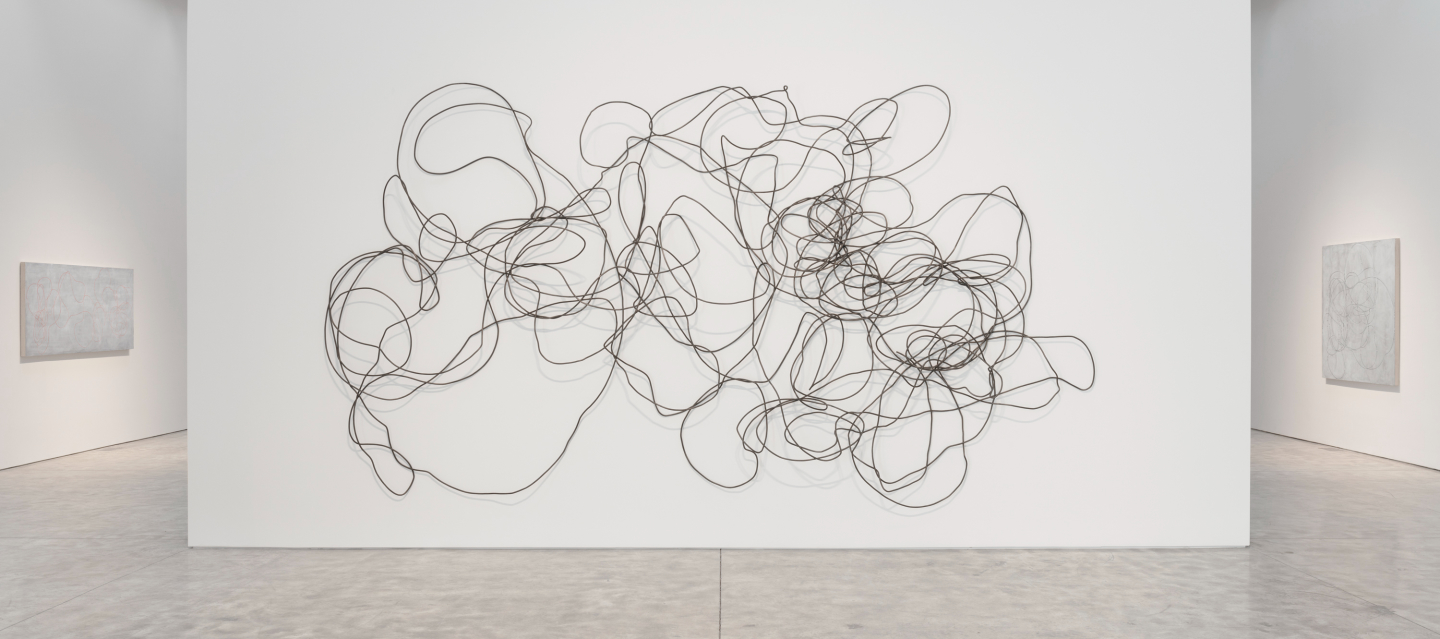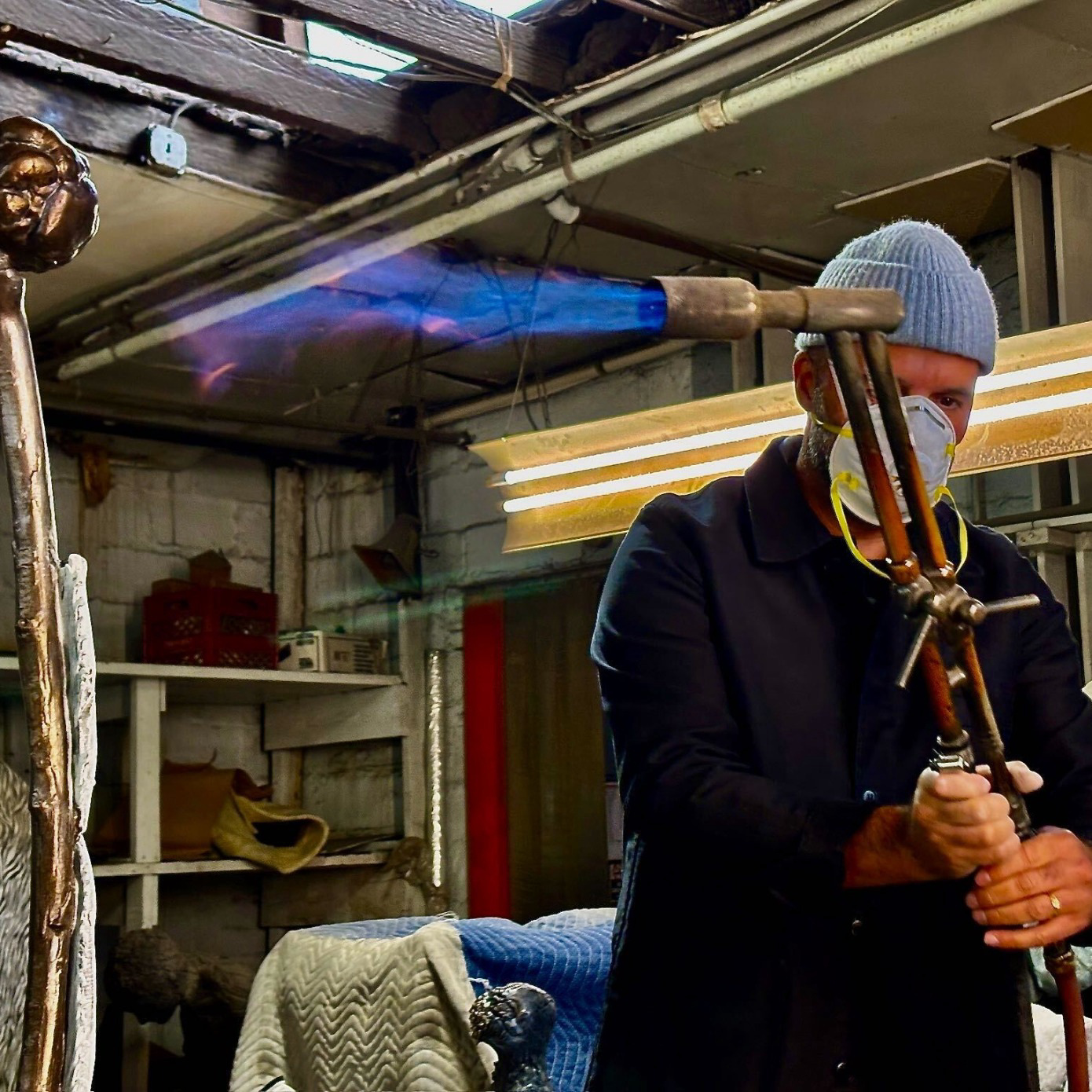In her new body of work, Elliott Puckette has taken something that seems so simple and demonstrated its true complexities—the line. The artist’s work redefines the traditional role that geometry plays in art and explores how linear abstraction can be brought to life through drawing, painting and sculpture. In her methodical, multistep art making process, Puckette creates lines through the instinctive contortion of wire maquettes and then the formation of a flattened image of the wire in her paintings. She carefully layers gesso onto the board and covers that with a layer of ink. Using her own language of lines, the artist draws with chalk and uses a razor blade to dig away at that line. This technique creates a subtractive depiction of a line, taking away from the canvas in order to create it.
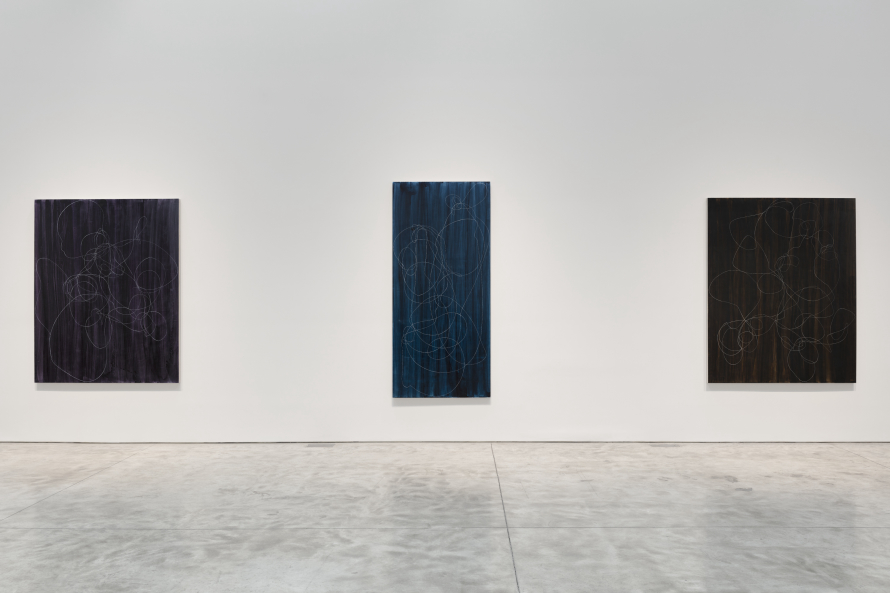
Puckette’s abstraction leads to lyrical imagery and emphasizes the importance of each individual marking in the creation of the overall image. During her current show at Kasmin Gallery in New York, Cultured spoke with the artist about her artistic development, her move into the medium of sculpture and how to walk (and mark) a line.
Cleo Kanter: How did you exercise creativity as a child?
Elliott Puckette: I didn’t discover art until I was a teenager. As a child I was always playing in the woods, off with the fairies, creating imaginary worlds in in my head.
CK: How has your work developed through the years?
EP: The inherent energy in calligraphy and graphology always interested me. Now I find the clear meander of the line in space is the point.
CK: What interests you about linear abstraction?
EP: The form. A line that goes for a walk is probability in motion… and I love getting lost in the wordless form that is open to interpretation.
CK: What are you exploring in this exhibition at Kasmin?
EP: 3D! And it’s been quite a learning process. I had a wonderful time working with a foundry in Kingston, New York called Workshop.
CK: How do the sculptural works in your current show relate to your paintings?
EP: Very directly. The paintings are based on wire configurations that I create. The sculptures are also drawn from those same maquettes.
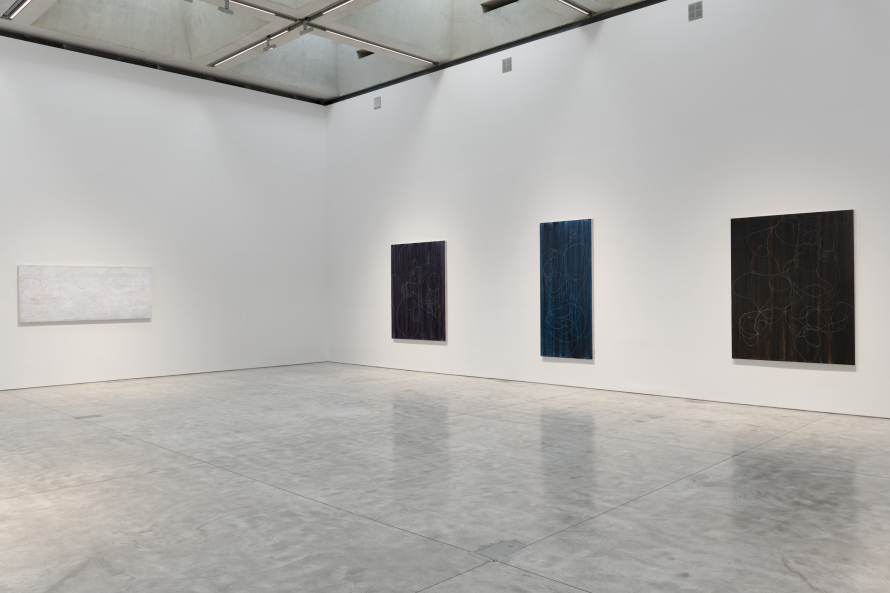
CK: How do color and shape interact in your work?
EP: The form is influenced less by color than value. The lighter the ground, the more emphatic the line needs to be. The darker backgrounds can have a much more delicate line and still be read.
CK: While your work appears to be clear cut lines, they are in fact etched together by thousands of smaller lines. What is your process like? Do you prefer to look at the big picture first or piece things together bit by bit?
EP: I initially draw it all out quickly with chalk. As soon as I map out the line the process slows down, and I etch it in with a razor blade.
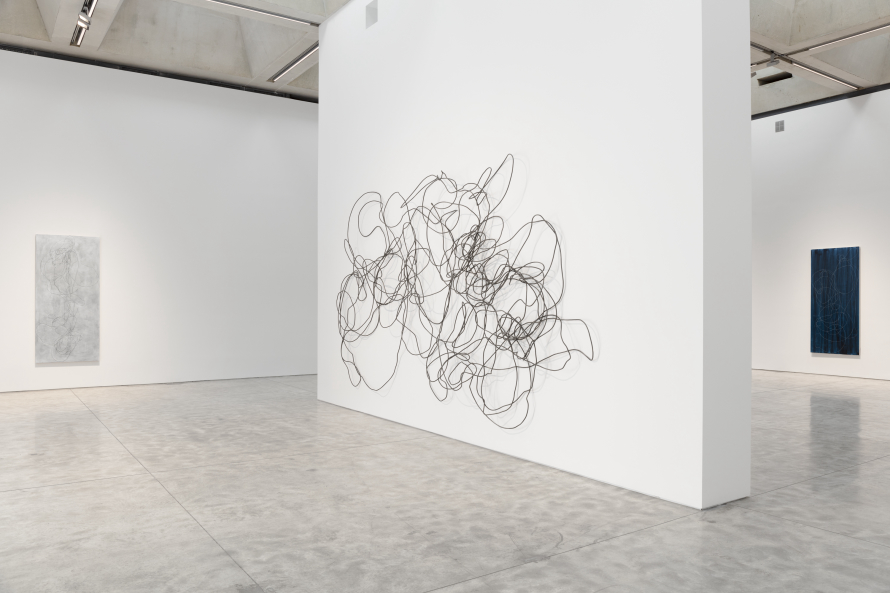
CK: Do you follow a storyline when you create each piece?
EP: No. I’m more of a formalist.
CK: As art is often centered around the addition to a surface, in what ways do your subtractive lines challenge this tradition?
EP: Why add when you can subtract? I like to strip away. Having said that, the sculptures are another can of worms entirely!

